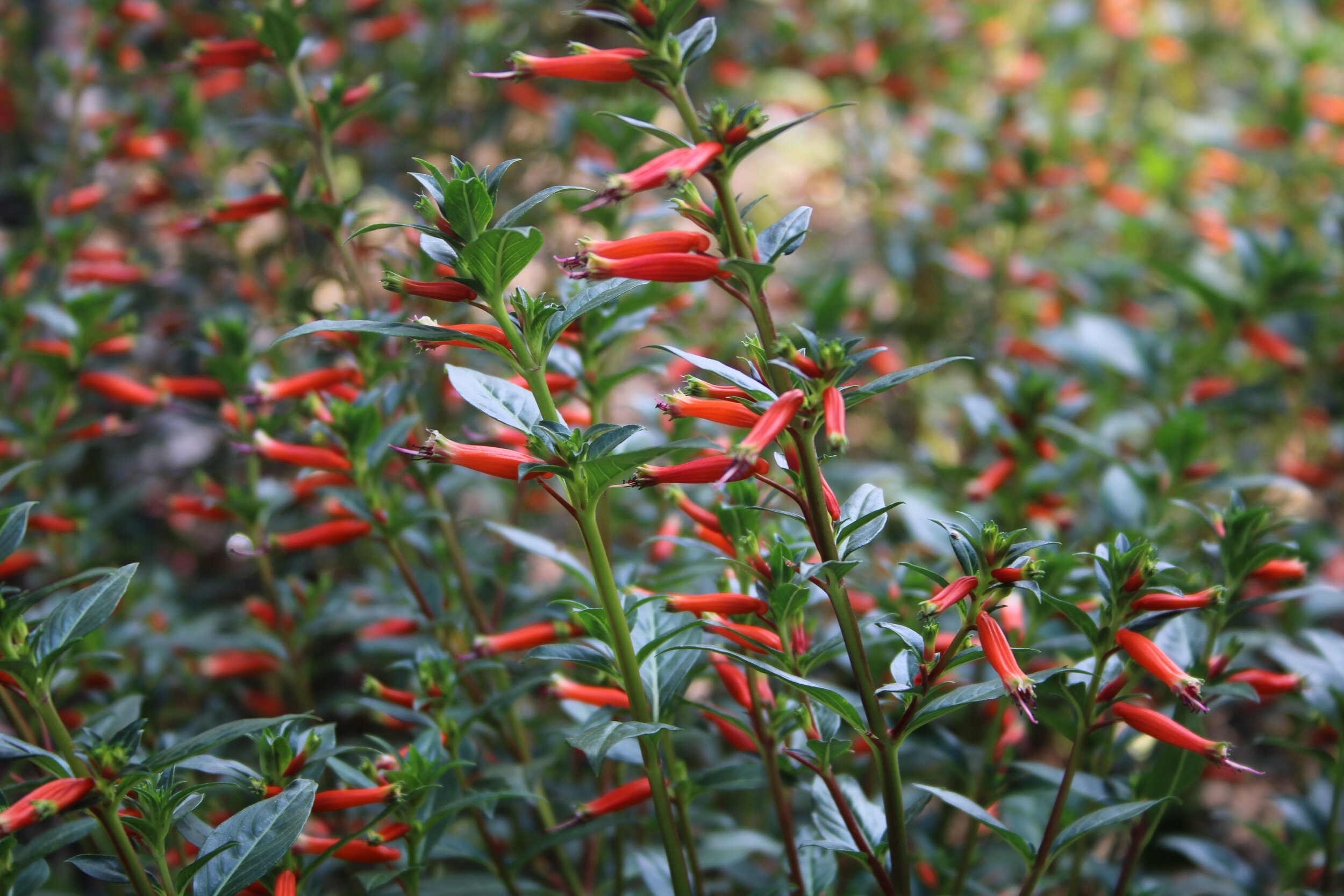Cuphea is top of my list for long-blooming annuals. There are 250+ species within the genus, which is pronounced kew-FEE-uh. Despite their kinship, two that are widely grown don’t resemble one another: Vermillionaire™ and Bat-Faced.
Butterflies flock to the orange flowers of Cuphea ‘Vermillionaire’ also called Firecracker Plant. The numerous flowers are look like tiny cigars. Cuphea llavea, “Bat-face Cuphea” has red petals and a purple calyx. In someone’s imagination, it resembles a bat’s face. Bat-face Cuphea looks especially good when paired with deep purple flowers like Petunia, Angelonia, or Periwinkle (the Catharanthus ‘Jams-N-Jellies’ series has a fabulous rich purple variety called “Blackberry”).
Heat-loving Cuphea originated in Mexico, Honduras, and Guatemala. They are perennial in zones 9 or warmer, and are enjoyed as annuals in zones 8 and above. (That zone info came from the experts but mine has returned every year in zone 7b. They are located in a microclimate, adjacent to an asphalt drive which keeps the soil warm in winter.) Cupheas tolerate humidity and will withstand moderate drought once established, but look their best when they receive a little supplemental irrigation in the hottest parts of July and August. They are not picky as to soil type. They prefer full sun or mostly sun. They are rarely troubled by diseases, but Japanese Beetles caused significant damage to mine this year. They recovered quickly when the insects departed for parts unknown.
Either of these Cupheas can get leggy after a few months. In that case, prune a few stems back each week. They will branch and throw new buds. The cuttings can be rooted easily, but baby plants should spend their first winter in a frost-free area (greenhouse) before they go into their outdoor homes. They are easily started from seed and will rapidly grow large enough to plant out. Both the Cupheas mentioned above will perform as well in containers as in flower beds. They can be brought indoors as a houseplant in winter. Indoors, water lightly and provide the brightest light possible.
Does this look like a bat’s face to you? Me neither.
Cuphea Vermillionaire™


